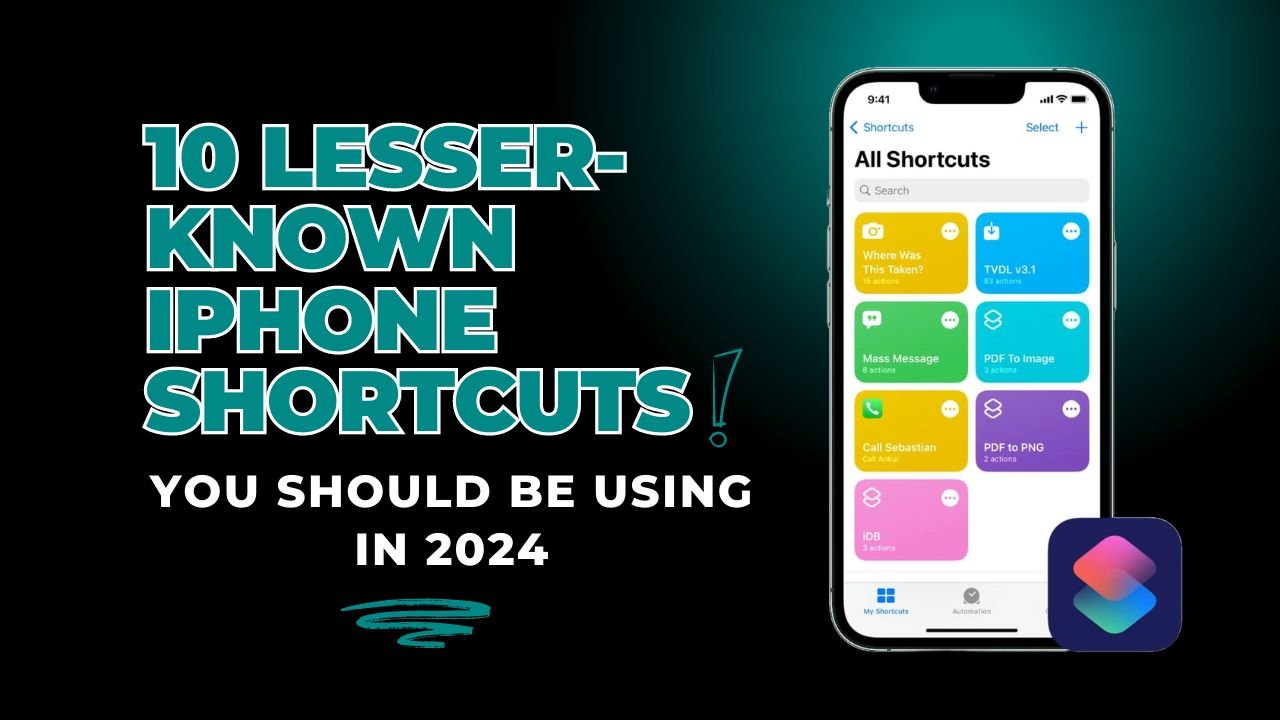Wearable technology has captured our imagination, promising a future where convenience seamlessly integrates with our daily lives. From smartwatches to fitness trackers, these gadgets have created a buzz of excitement around the possibilities they offer. However, not all journeys into the world of wearables have been smooth. In this post, we take a closer look at some of the most notorious gadget fails in recent history, shedding light on the darker side of tech innovation.
- Google Glass: The Misstep of the Future
- Samsung Galaxy Note 7: A Fiery Fiasco
- Jawbone: The Silent Shutdown
- Pebble Smartwatch: From Kickstarter Darling to Disappointment
- Fitbit Force: The Rash of Complaints
- Trailblazers of Wear: Celebrating the Success Stories in Wearable Technology
- Enhance Your Wearable Experience with These Top Picks from Amazon
- Conclusion
Google Glass: The Misstep of the Future
When Google Glass was unveiled, it created a seismic shift in the tech landscape. The concept of a wearable device with a head-mounted display was groundbreaking, offering users a hands-free experience that seemed pulled straight from a sci-fi movie. The ability to take photos, record videos, and access information with just a voice command set Google Glass apart from anything that had come before it. The tech world was abuzz with excitement, envisioning a future where wearing smart glasses was as common as carrying a smartphone.
A. Features and Hype
Google Glass was not just a device; it was a statement of what technology could achieve. The sleek design and futuristic appeal made early adopters feel like they were part of an exclusive club shaping the future. The convenience of having a heads-up display providing real-time information without having to reach for a phone seemed like a game-changer in everyday life. The potential applications for professionals in various industries seemed limitless, sparking a wave of interest and investment in the technology.
B. Privacy Concerns and Social Backlash
However, the initial enthusiasm for Google Glass quickly turned to apprehension as privacy concerns emerged. The ability of the device to discreetly record videos and take photos raised significant ethical questions about consent and surveillance. People felt uneasy knowing they could be filmed without their knowledge, leading to a backlash against wearers of Google Glass. Bars, restaurants, and other establishments banned the use of the device, citing privacy issues and disrupting the once-hyped social acceptance of the gadget.
The societal resistance toward Google Glass grew as the perception shifted from innovation to intrusion. The public began to view wearers of the device as potential threats to privacy, creating a barrier between early adopters and the general population. The negative connotations associated with Google Glass became a cautionary tale of how even the most advanced technology could falter in the face of societal values and privacy concerns.
Samsung Galaxy Note 7: A Fiery Fiasco
The Samsung Galaxy Note 7, touted as a revolutionary device, started its journey with high hopes and grand ambitions. From the initial stages of its launch, the Galaxy Note 7 captured the attention of tech enthusiasts worldwide, heralding a new era of innovation in the smartphone industry.

A. Launch and Initial Success
The grand unveiling of the Samsung Galaxy Note 7 sent ripples of excitement through the tech community. Boasting cutting-edge features and a sleek design, the smartphone was hailed as a game-changer in the industry. Its large, vibrant display and advanced functionalities garnered positive reviews, positioning the Galaxy Note 7 as a frontrunner in the competitive smartphone market. Consumers eagerly awaited the opportunity to experience the next level of mobile technology.
B. Battery Issues and Global Recall
Despite its promising start, the Samsung Galaxy Note 7 encountered a catastrophic downfall due to unforeseen battery malfunctions. Reports of devices catching fire and exploding surfaced, sparking widespread safety concerns among users. The battery issues prompted a global recall of the Galaxy Note 7, tarnishing Samsung’s reputation and causing a significant blow to the company’s standing in the market.
The global recall of the Samsung Galaxy Note 7 marked a pivotal moment in the history of smartphone disasters. The widespread nature of the recall highlighted the severity of the battery malfunctions, leading to a substantial financial impact on Samsung. The once-celebrated device became synonymous with danger, serving as a cautionary tale of the potential pitfalls in the relentless pursuit of technological advancement.
Jawbone: The Silent Shutdown
Jawbone, a key player in the wearable tech industry, carved out its path to prominence through innovative products that captured the attention of tech-savvy consumers. Let’s explore Jawbone’s rise to dominance and the subsequent financial woes and product failures that led to its quiet exit from the market.
A. Rise and Dominance
Jawbone made waves in the wearable tech industry with its stylish and functional devices that appealed to health-conscious individuals and tech enthusiasts alike. The brand’s key products, such as the Jawbone UP fitness trackers, gained popularity for their sleek designs and advanced tracking features. Users were drawn to the idea of seamlessly monitoring their daily activities and sleep patterns, enhancing their overall wellness goals with intuitive technology.
Some of their standout products included:
- Jawbone UP24: This fitness tracker offered 24/7 activity tracking, sleep monitoring, and a smart alarm feature, making it a favorite among fitness enthusiasts.
- Jawbone Jambox: Beyond fitness, Jawbone’s Bluetooth speakers like the Jambox were highly regarded for their design and sound quality.
Jawbone’s ability to blend fashion with functionality set it apart from competitors, helping it secure a top spot in the early wearable tech market.
B. Financial Woes and Product Failures
Despite its early success, Jawbone faced significant challenges on the financial front, struggling to maintain its competitive edge in a rapidly evolving market. The brand encountered hurdles with product reliability, facing issues such as battery performance concerns and software glitches that hindered user experience. These product failures, coupled with intense competition from other wearable tech giants, took a toll on Jawbone’s reputation and market share.
Key financial hurdles included:
- Product Reliability Issues: Reports of battery malfunctions and syncing problems plagued Jawbone devices, causing frustration among users.
- Software Glitches: Frequent software updates led to bugs and inconsistent performance, damaging customer trust.
As financial troubles mounted and consumer trust wavered, Jawbone found itself on a downward trajectory that culminated in its eventual exit from the wearable tech scene. The once-prominent brand silently faded away, leaving behind a legacy of unfulfilled potential and untapped opportunities in an industry brimming with innovation and fierce competition.
Pebble Smartwatch: From Kickstarter Darling to Disappointment
The Pebble Smartwatch embarked on its journey as a beacon of hope for wearables enthusiasts, setting the stage for a momentous rise and a heartbreaking fall in the tech sphere. Let’s unravel the tale of the Pebble Smartwatch, from its humble beginnings on Kickstarter to the hurdles that led to its eventual downfall.
A. Kickstarter Success and Market Entry
The Pebble Smartwatch burst onto the scene in a whirlwind of excitement, captivating tech aficionados with its promise of blending style and functionality seamlessly on the wrist. Its humble origins as a Kickstarter project sparked a frenzy of support, surpassing funding goals and capturing the hearts of early backers. The innovative concept of a customizable e-paper display, coupled with app integration and long battery life, resonated with consumers craving a smartwatch that prioritized simplicity and utility.
As the Pebble Smartwatch transitioned from Kickstarter darling to market entrant, its sleek design and user-friendly interface garnered praise and admiration. The device’s compatibility with both iOS and Android platforms further widened its appeal, positioning it as a versatile companion for tech-savvy individuals seeking a connected lifestyle without the frills of more complex smartwatches.
B. Competition and Market Shifts
Despite its promising start, the Pebble Smartwatch soon found itself navigating turbulent waters in an increasingly competitive landscape teeming with tech giants and innovation. The emergence of new players in the smartwatch arena, coupled with the rapid evolution of wearable technology, posed challenges for Pebble’s continued success.
As market shifts dictated changing consumer preferences and elevated expectations, the Pebble Smartwatch struggled to maintain its momentum. The entry of tech behemoths offering more advanced features and sleeker designs overshadowed Pebble’s niche appeal, leading to a decline in market share and consumer interest.
Navigating the choppy waters of an industry in flux, Pebble faced an uphill battle to stay afloat amidst fierce competition and shifting consumer demands. The once-promising smartwatch that captured the imagination of early adopters now stood at a crossroads, grappling with the harsh realities of a market that waits for no one.
Fitbit Force: The Rash of Complaints
The allure of the Fitbit Force initially captivated fitness enthusiasts and tech-savvy individuals alike with its array of features tailored to elevate the wearable tech experience. Boasting sleek design elements and a range of functionalities, the Fitbit Force made waves upon its entry into the market, garnering positive reception and fueling excitement among users seeking to track their health and activity levels seamlessly.
A. Product Features and Initial Reception
The Fitbit Force emerged as a frontrunner in the fitness tracker landscape, offering users a comprehensive suite of tracking capabilities, including:
- Step counting: Accurately measuring daily steps.
- Sleep monitoring: Providing insights into sleep patterns.
- Heart rate tracking: Monitoring heart rate during different activities.
- Smartphone integration: Syncing with apps for a seamless experience.
Its user-friendly interface set it apart from competitors, positioning it as a go-to device for those looking to enhance their wellness journey.
The initial reception of the Fitbit Force was met with enthusiasm, as users praised its accuracy in tracking metrics and its sleek design that effortlessly blended into daily wear. The device quickly became a companion for fitness enthusiasts, monitoring their progress and encouraging healthier habits through real-time data insights.
B. Skin Irritation Issues and Recall
Despite its promising start, the Fitbit Force encountered a significant setback when reports of skin irritation surfaced among users wearing the device. Complaints included:
- Rashes: Red, itchy areas on the skin.
- Irritation: Persistent discomfort where the device was worn.
- Blisters: Severe reactions in some users.
These concerns raised alarms about the materials used in the Fitbit Force’s construction, prompting an investigation into the root cause of the skin reactions.
The skin irritation issues escalated to a point where Fitbit deemed it necessary to recall the Fitbit Force from the market, prioritizing user safety and well-being. The recall marked a turning point in the device’s journey, underscoring the critical importance of product safety and consumer trust in the wearable tech industry.
Fitbit’s recall due to skin irritation complaints served as a stark reminder of the delicate balance between innovation and user wellness. It highlighted the risks involved in pushing technological boundaries without compromising on essential factors such as comfort and safety. This episode urged companies to prioritize rigorous testing and quality assurance to prevent similar incidents in the future, setting a precedent for accountability and transparency in the wearable tech sphere.
Trailblazers of Wear: Celebrating the Success Stories in Wearable Technology
Successful wearable products have evolved significantly, with many achieving remarkable success in the market. Here are some of the standout wearable products that have made an impact:
- Apple Watch X: Celebrating a decade of innovation, the Apple Watch X is anticipated to introduce new health metrics, possibly including blood pressure detection and sleep apnea alerts. It may also feature a microLED display, marking a significant step in smartwatch technology.
- XREAL Air 2 Ultra AR Specs: After an impressive demonstration at CES 2024, these AR specs are expected to offer a comfortable and slim design with advanced spatial computing capabilities. While hand-tracking needs refinement, XREAL is positioned to be a strong contender in the AR space.
- Samsung Galaxy Ring: Smart rings are becoming more mainstream, and the Samsung Galaxy Ring is set to be a key player. Focused on health and integrated with AI features for Samsung Health, it’s a wearable to watch out for.
- Garmin Health: Garmin’s focus on health and fitness has led to the development of wearables that cater to a wide range of activities, making it a trusted name in the industry.
- AI-powered Women’s Health Features: Wearables are increasingly incorporating AI to offer personalized health insights, particularly in women’s health, which is becoming a significant focus area.
These products represent the diversity and innovation present in the wearable technology market. They not only provide convenience and enhanced user experiences but also contribute to health and wellness by offering valuable insights and tracking capabilities. For a comprehensive list of the latest innovations in wearable technology, you can refer to the full list on PULSE by Wareable
Q. What’s next for wearable tech?
The future of wearable technology is shaping up to be quite exciting, with several trends and innovations on the horizon. Here’s what we can expect:
- Smaller and More Discreet Devices: Wearables are becoming increasingly smaller and more discreet, integrating seamlessly into our daily lives without being obtrusive.
- Advanced Health Monitoring: The focus on health will continue, with devices offering more sophisticated health monitoring capabilities, including blood pressure tracking and sleep apnea detection.
- Smart Clothing: The integration of technology into clothing is expected to advance, providing new ways to interact with our devices and gather data.
- Energy Harvesting: Wearables may soon be able to convert body heat, movement, or solar energy into power, reducing the need for frequent charging.
- Virtual Assistants and AI: The use of AI and virtual assistants in wearables will enhance user interaction, providing personalized insights and more intuitive controls.
- Mainstream Smart Rings: Smart rings, like the Samsung Galaxy Ring, are set to become more mainstream, focusing on health and AI features.
- Mental Health and Brain Tracking: There’s a growing interest in mental health and brain tracking, which could lead to wearables that help manage stress and improve mental well-being.
These developments suggest that wearable tech will continue to evolve, becoming more integrated into our health, work, and personal lives.
Enhance Your Wearable Experience with These Top Picks from Amazon
- Next-Gen Smartwatch: Look for the latest smartwatch model that offers comprehensive health tracking, phone-free music, and contactless payments.
- Fitness Tracker Band: Choose a popular fitness tracker that monitors heart rate, sleep patterns, and offers guided workouts.
- Smart Eyewear: Find smart glasses that provide heads-up notifications, photo and video capture, and voice assistant integration.
- Health Monitoring Earbuds: Search for earbuds that not only deliver high-quality audio but also track biometric data for health insights.
- Fashionable Smart Jewelry: Consider smart jewelry that combines style with functionality, offering activity tracking and smartphone notifications.
Read More: Smartphone AI : How It’s Shaping the Future of Technology
Conclusion
As we wrap up our journey through the most notorious gadget fails in recent wearable tech history, one thing becomes clear: innovation alone is not enough to guarantee success. The cautionary tales of Google Glass, Samsung Galaxy Note 7, Jawbone, Pebble Smartwatch, and Fitbit Force underscore the vital importance of user feedback, quality control, and ethical considerations in the tech industry.
These wearable tech disasters serve as potent reminders that even the most promising innovations can falter if they disregard user privacy, safety, and comfort. Innovation must walk hand in hand with responsible product development, rigorous testing, and transparent communication with consumers. The failures highlighted here urge tech companies to listen to their users, prioritize quality over haste, and uphold ethical standards in their pursuit of advancement.
In the ever-evolving landscape of wearable technology, the lessons learned from these disasters serve as beacons guiding companies towards a future where innovation is not just about pushing boundaries but about safeguarding the trust and well-being of users. As we look ahead, the path to success in the tech industry lies not only in groundbreaking ideas but in the thoughtful execution that prioritizes the needs and values of those who interact with the technology.






